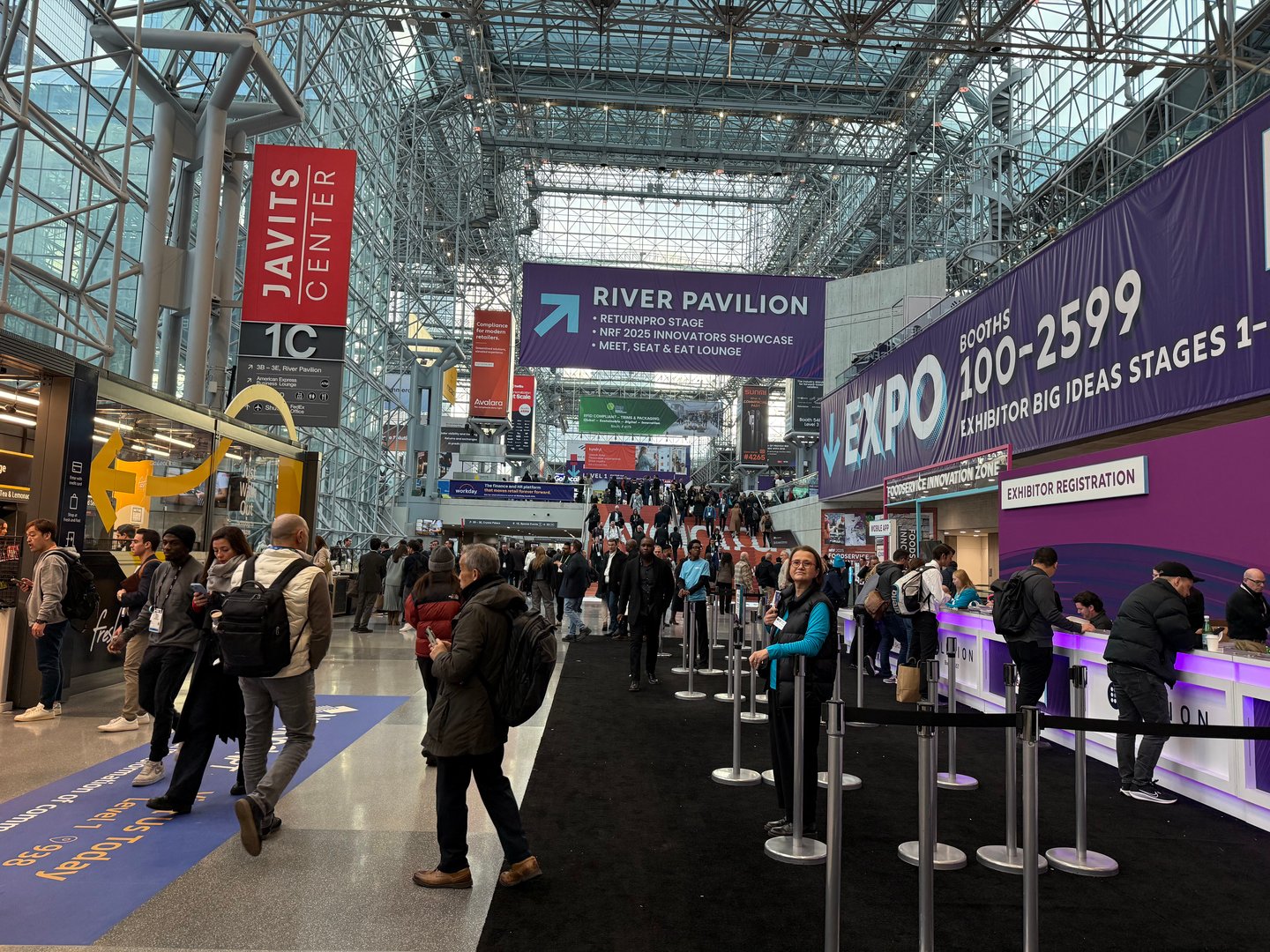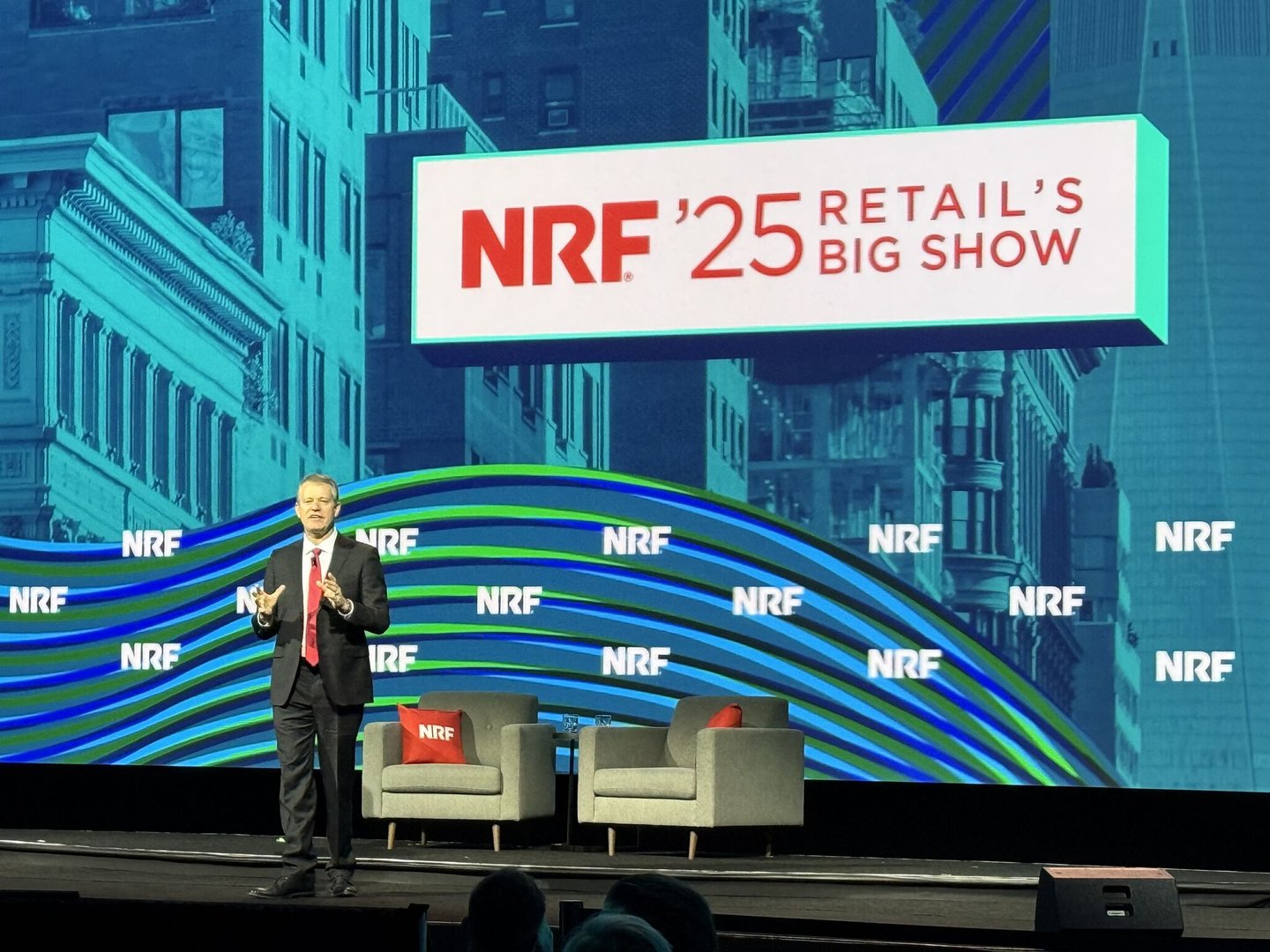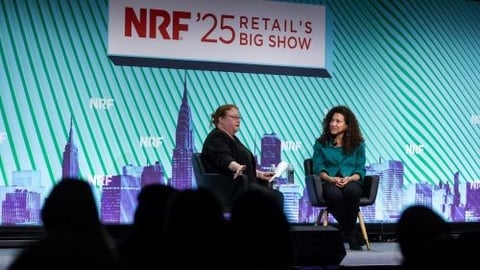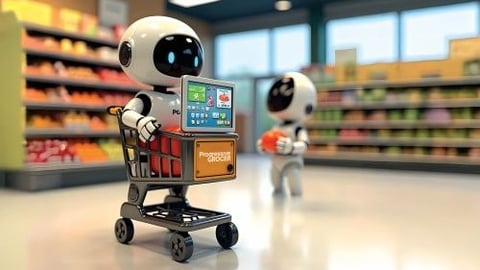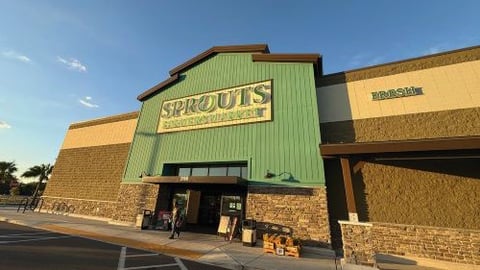NRF BIG SHOW: 5 Key Takeaways for Grocers
More than 60,000 steps were taken over the span of three days.
Countless double espressos were consumed.
And hundreds of AI-powered solutions were demoed – while some attendees did “The Hustle” under a giant disco ball.
Another Big Show from the National Retail Federation has wrapped, and what a show it was.
Nearly 40,000 of retail tech’s most influential leaders, vendors and solution gurus from more than 100 countries descended once again on New York City’s Javits Center to kick off the new year in style, along with 6,200 brands and 450 speakers across 175 sessions.
This year’s 114th Big Show featured a wealth of insights and innovations with significant implications for grocery retailers navigating a rapidly changing marketplace. From next-gen pricing technology to strategic advancements in supply chains and customer experience, here’s a closer look at the standout trends at the show.
1. Next GenAI
AI stood out again as the dominant theme at the show just like last year, with more than 125 exhibitors presenting AI-powered tools tailored to retail. Grocery retailers have significant opportunities to leverage generative and agentic AI to improve forecasting, personalization, operational efficiency and revenue growth.
Key Trends:
Digital Twins: Retailers such as Walmart are using AI to create digital twins of their supply chains and stores, allowing them to simulate and test operational changes virtually. This reduces the risk of physical alterations and helps optimize inventory placement and store layouts.
Forecasting Enhancements: Retailers such as Kroger are adopting AI-driven data models to refine inventory forecasting. By analyzing data across SKUs, AI tools can improve accuracy, ensuring the right products are available at the right time, reducing stockouts, and minimizing overstock.
Personalization Tools: Generative AI is transforming e-commerce for grocers, enhancing search functionalities, and creating AI shopping assistants that guide consumers with personalized recommendations. Aptos, a leader in unified commerce solutions, is bringing more AI experiences into the store in 2025, including sales and customer insights and personalized product recommendations. The company plans to intro AI-generated customer insights summarizations and product recommendations that will be displayed to store associates via the Aptos ONE POS UI during customer inquiry and product inquiry lookups. With these AI insights, associates have highly relevant information to engage customers in that moment — creating a more personalized and service-oriented experience.
Aptos will also be launching a GenAI chatbot that can help store associates and store managers better understand what’s happening in their stores and leverage that data to drive improved sales performance. The GenAI chatbot is one of the ways Aptos is promoting data-driven decision-making on the front line of retail.
Next-Level Pricing Optimization: Revionics is partnering with Google on solutions that put GenAI and pricing AI to work with agentic AI to solve complex pricing quandaries and take action on them. Matt Pavich, senior director, strategy and innovation at Revionics, an Aptos Company, said: “As we move into the agentic AI space, it’s the ability to action on those things in real time in a way that's driving real value. Originally, the system’s pricing AI capabilities might have recommended a specific price. Now with gen AI, you can ask questions like, ‘OK, of my top 50 items, which ones has Walmart beaten me on the most in the last 6 months?’ So we have evolved from answering a simple question with a simple price, to offering an advanced display over a certain period of time, and recommended actions.”
2. Intelligent Supply Chain
Supply chain optimization was a key theme at NRF, and for grocery retailers, reducing waste and improving efficiency are critically important this year.
Key Trends:
Physics AI: Nvidia introduced physics-based AI that simulates the behavior of items within supply chains. By accounting for factors such as weight, volume, and perishability, grocers can optimize layouts in warehouses and ensure first-expired, first-out (FEFO) principles are adhered to.
End-to-End Traceability: RFID and real-time tracking technologies from companies such as Avery Dennison enable seamless traceability from farm to shelf. This helps retailers comply with expanding regulatory requirements and reassures customers concerned about food safety and provenance.
Food Waste Reduction: Automated monitoring solutions, such as freezer and refrigeration sensors, provide real-time alerts for temperature fluctuations, preventing spoilage and saving costs. Avery Dennison’s product tracking offers real time inventory visibility at the item and case level so retailers can intelligently track and trace the contents of inventory, verifying a food item's journey and selling items before their expiry dates. Solutions like RFID tracking and IoT-enabled sensors empower retailers to monitor product shelf life, enabling dynamic markdowns and waste reduction. For instance, price adjustments can be triggered as expiration dates approach, ensuring products are sold instead of discarded.
3. Truly Frictionless Experiences
Today’s grocery shoppers prioritize convenience, and frictionless technologies are reshaping their in-store and online experiences. But a lot of frictionless solutions still have way too much friction. These innovations aim to streamline every step of the shopping process.
Key trends:
Easier Checkout: According to NCR Voyix, which had a showstopper of a booth at NRF this year, 77% of shoppers prefer self-checkout because it’s faster than staffed checkout. The company’s second annual commerce experience report also showed that more than one-third of shoppers (36%) prefer self-checkout because it has shorter lines, while 43% prefer to bag their items. Sixty percent of shoppers who do not frequent self-checkout would be more inclined to do so if grocery stores made it easier to check out with more than 15 items. As the future of customer experiences continues to evolve, consumers are looking for more smart technology, enhanced checkout options, product personalization, and convenience.
“It’s tried and true, but businesses really do win when they focus on customer experience,” said David Wilkinson, chief executive officer at NCR Voyix. “Our data shows consumers want more technology present to simplify checkout, greater personalization, and loyalty rewards. It also shows that when places like fuel convenience and limited-service restaurants provide quality products at affordable prices, it pays off. Businesses will continue to adapt to changing consumer expectations in the year ahead and lean on new technology even more to be competitive.”
AI-powered checkout solutions, such as those by NCR Voyix, Toshiba and Diebold Nixdorf, allow customers to scan items with ease while minimizing errors and theft. Toshiba showcased its Vision Kiosk self checkout solution, which bypasses barcodes completely by automatically identifying and validating items. Meanwhile, Toshiba’s Self Checkout System 7 integrates edge computing cameras to minimize shrink while providing consumers enhanced checkout experiences and reduced friction. For produce recognition Toshiba’s TCx EDGEcam leverages AI and computer vision integrated with Intel technology to identify produce accurately and fast. Based on retailer data, Toshiba has found that shoppers save as much as five seconds per produce item lookup during checkout.
Pick-to-Light: Electronic shelf labels (ESLs) were ubiquitous at NRF, and the race is on to see who gets to dominate shelf edge communications in-store across grocery. Vendors such as Vestcom, VusionGroup and Pricer showcased solutions that integrate with online order fulfillment systems, enabling employees to quickly locate and pick items for in-store pickup (BOPIS) or delivery.
Next-Gen Shelf Promos: Whether retailers embrace ESLs or not, paper is here to stay. The leaders at Vestcom, which offers a holistic in-store strategy across print and digital vehicles, from one centralized platform, called StoreLink, demoed some paper labels next to ESLs, because “trying to squeeze a promotional message onto a small digital tag gets hard. Retailers shouldn’t be compromising on the quality of their value communications, so they need to find the right balance of capturing labor efficiencies where it makes sense, but also supplementing with paper in a few spots where it’s going to be better for the shopper and better for the store.”
Smart Carts: More AI-enabled smart carts roamed the Big Show halls this year, from Instacart and other vendors. These solutions, along with autonomous robots from companies such as Simbe, reduce labor costs and improve associate satisfaction by removing operational pain points. As frictionless solutions become more accessible, grocery retailers can focus on deploying these technologies to enhance the customer journey and reduce operational challenges.
4. Operational Efficiency
Physical stores are leveling up with technologies that enhance both customer interactions and operational efficiency, solving core pain points.
Key Trends:
Network as a Service (NaaS): With growing reliance on digital tools, grocery retailers are transitioning to cellular-first technology for store and warehouse operations. Verizon’s NaaS solution provides scalable bandwidth solutions that adjust to peak demand periods, such as holiday seasons or promotional events.
Private Cellular Networks: Retailers are embracing fixed wireless and private cellular networks in warehouses, reducing energy consumption while maintaining operational efficiency. Large-scale operations, such as distribution centers and mega stores, are adopting private cellular networks. This ensures reliable connectivity even in environments where traditional Wi-Fi signals may falter.
Seamless Integration of Digital Tools: Platforms like Zebra devices allow workers to pick and manage inventory efficiently. These tools, when integrated with cellular networks, enable real-time operations, even during outages or disruptions.
5. Agility in Times of Uncertainty
John Furner, president and CEO of Walmart U.S., opened NRF's Big Show by summarizing 2024 as a year of numerous challenges (port strikes, inflation, grocery price speculation, labor constraints, geopolitical upheaval, etc.), yet retailers stayed nimble and rode the waves of uncertainty with success.
This year, however, promises to bring “more uncertainty, more challenges,” Furner said.
But some of those challenges, at least, might not necessarily be related to shoppers complaining about grocery prices.
Michelle Evans, global lead: retail and digital consumer at Euromonitor International, said that for U.S. grocery shoppers, price remains a top shopping motivation, but “it's on the decline.”
“What that tells us is that something else is coming into play here. Price alone isn’t the only purchase driver. Consumers are also considering other things: the quality of the product, the authenticity of the product. Does the company offering this product align with my personal values? Around 30% of consumers in North America and also globally say they will buy from brands where there's alignment with their political and social beliefs and how they view the world. So that's just one angle that consumers are increasingly considering. Consumers are also willing to pay more for health and nutritional properties and superior taste when it comes to food and beverage in North America.”
According to Evans, e-commerce grocery is forecast to increase by 5% in 2025, while retail foodservice growth is on a 2.7% path to growth, compared with just 1% for the North American grocery sector overall.
“As shopping expectations continue to evolve and elevate, the challenge is providing that level of convenience for consumers,” especially for grocers having to reach shoppers across the full spectrum of convenience — from their phones to their local neighborhoods.
To adapt, stores are becoming not only a place of discovery, but increasingly, distribution hubs. “Tech will continue to be integral to continued growth both online and offline,” she said.
Grocery retailers are also leaning into other revenue streams, further blurring the line between brands and retailers. “Retail media networks have been growing,” Evans said. “Retailers are capitalizing on monetizing their new audience.”
By focusing on offering an exceptional customer value proposition and embracing digital transformation, grocery retailers can future-proof their businesses and deliver superior experiences to both customers and employees. Grocery retailers who adopt these innovations will not only enhance operational efficiency but also build stronger connections with consumers, paving the way for long-term growth in an increasingly competitive landscape.



